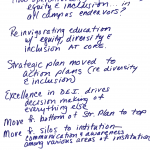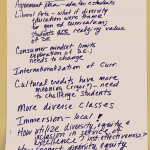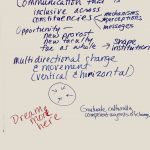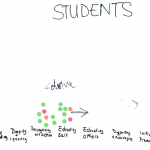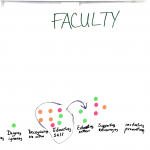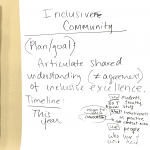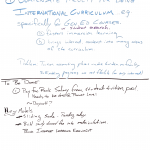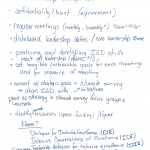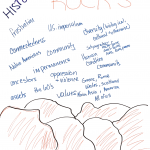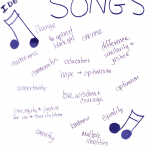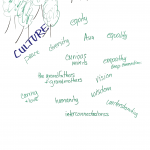In response to a recent call, 21 Stetson faculty and staff from diverse areas of campus spent three days in an Intergroup Dialogue Institute. The facilitators, Dierdre Johnston and Lorna Hernandez-Jarvis, pioneered the Intergroup Dialogue program at Hope College through which numerous faculty and staff have been trained to facilitate dialogues around issues of diversity and inclusion. Intergroup dialogue is distinct from debate and discussion in that the goal of dialogue is understanding not necessarily agreement. A successful dialogue requires significant trust among participants and engages active listening skills.
[fts_facebook id=jkmetzker album_id=1751276325111483 posts=4 type=album_photos image_width=100px image_height=100px space_between_photos=1px hide_date_likes_comments=no center_container=no image_stack_animation=no image_position_lr=-0% image_position_top=-0%]
Over the course of three days, participants were guided through five stages of intergroup dialogue:
- Understanding Dialogue and Developing Conversation
- Developing Communication Skills
- Exploring Identity and Relationships
- Embracing Conflict
- Building Alliances and Making Commitments
we penned some dreams
we evaluated where our community stands …
we made some plans …
and we created a story by reflecting on our history, identity and culture …
[NOTE: The presentation files will be added to this post as soon as they are available.]
Resources for continued Learning
- Adams, M., & Bell, L. A. (Eds.). (2016). Teaching for diversity and social justice. Routledge.
- Stone, D., Patton, B., & Heen, S. (2010). Difficult conversations: How to discuss what matters most. Penguin.
- The National Intergroup Dialogue Institute at the University of Michigan
- Nagda, B. A., Gurin, P., Sorensen, N., & Zúñiga, X. (2009). Evaluating intergroup dialogue: Engaging diversity for personal and social responsibility. Diversity & Democracy, 12(1), 4-6.
- Dear Colleague Letter, published on December 31, 2015 by the Education Secretary and Deputy Secretary, outlines the Federal Government’s position on learning environments in which students are free from discrimination and harassment based on their race, religion, or national origin.
- Nagda, B. A., & Maxwell, K. E. (2011). Deepening the layers of understanding and connection: A critical-dialogic approach to facilitating intergroup dialogues. Facilitating intergroup dialogues: Bridging differences, catalyzing change, 1-22.
- Wijeyesinghe, C. L., Griffin, P., & Love, B. (1997). Racism curriculum design.Teaching for diversity and social justice, 82-109.
- The Feelings Wheel developed by Dr. Gloria Wilcox
- Johnston, D. D., Stinski, M., & Meyers, D. (1993). Development of an alexithymia instrument to measure the diminished communication of affect. Communication Research Reports, 10(2), 149-160.
- The Critical Mind is A Questioning Mind Learning How to Ask Powerful, Probing Questions – The Critical Thinking Community
- Huang-Nissen, S. (1999). Dialogue groups: A practical guide to facilitate diversity conversation. Medicine Bear Publishing.
- Linehan, M. M. (2014). DBT® skills training manual. Guilford Publications.
- Intent versus Impact: Two Kenyon Students Offered An Incredibly Sincere And Thoughtful Apology After Accusations Of Racial Insensitivity
Funding and support
This institute was generously supported by the following groups:
- Campus Life and Student Success (specifically the Center for of Community Engagement, Cross Cultural Center, and Housing and Residential Life)
- College of Arts & Sciences
- Brown Center for Faculty Innovation and Excellence
- Office of Human Resources
- University Honors Program
- Faculty Senate, via a gift from Patrick Coggins
- University Curriculum and Assessment Office
- Department of Accounting
- Department of Religious Studies
- Department of Sociology and Anthropology
- Department of Counselor Education
- Department of World Languages and Cultures
- Gender Studies Program


